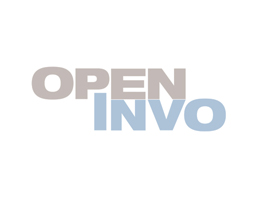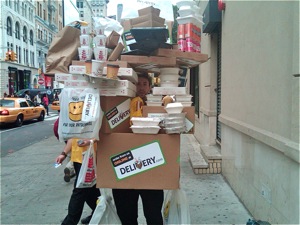This is the transcript from my interview with Jesse Middleton, founder of GetMinders, a start-up service that hopes to make missing your meds a thing of the past.
What is GetMinders?
GetMinders connects people with their medical reminders, their medical professionals and their families/support networks all via a quick phone call or text message. Our system calls patients to remind them to take their meds, get to their appointments or do their therapy and then offers to connect them with all of the above people to help keep them compliant, happy and healthy.
We’ve been running a super early pilot and the feedback has been amazing so far. We now have a private beta launched that is making over 350 calls per week and we’re really excited to continue to grow the company, build the product and gain more advice and feedback throughout the industry and from people like you.
Where did the idea for your business come from?
While I was traveling recently I began a discussion with a distant cousin who is a dentist. As we got talking about the needs of his patients I thought of my grandfather, in Florida, who is in a very late stage of Parkinson’s. It’s easy for someone in his position to forget to take their meds, mess up which ones they take when most importantly become disconnected with his family, friends and medical professionals.
Why are you doing this? I mean why not just get a job at a fast growing company and stop killing yourself?
I’ve been on both sides. I started my first company at 16 and I’ve worked for numerous large corporations and start-ups over the past 8 years. I felt like it was just the right time to take the leap and try to build a business that could help people on my own. NOTE: My wife gave me a kick in the ass to really get the ball rolling. She told me that right now we have some cheap rent and two annoying cats to take care of. One day we’ll have kids and other responsibilities and it’ll be a lot harder to do.
What does success look like for you personally and for your company?
As a company, getting our product in the hands of millions of people that need to remember to take their medications, keep track of their compliance or take care of their loved ones would be pretty amazing for us. For me personally I’d like to make it to a point where I can invest in others’ ideas that can make the world a better place.
How long have you been at it and where do things stand right now?
We’ve been working on GetMinders for only a couple of months. The real coding and build out came only about a month ago. We’re now in a very early stage where we’re making over 350 calls per week and looking at next steps including funding and market testing.
Other than money, what are the biggest barriers to your success right now?
The biggest barrier for us is the need for a real voice. Speaking to the right people in the industry can be hard. Insurance companies are huge, pharmaceutical companies are even larger and medical networks and hospital systems have so much red tape it can take years to get things from idea to production. Making sure that we’re getting the right introductions and talking to the right people are very important to our success now.
Describe some of the highs you’ve experienced thus far
Right after the first weekend I built a very simple prototype we were making over 100 calls per week with our platform. When I put out simple request for testers on Twitter/Facebook the emails were overwhelming. The fact that people jump at the opportunity to help their friends (and others in the same industry) gives me a strong feeling that we will be successful.
Just a day ago I presented at a technology Meetup in Stamford, CT run by Roger Wu. After presenting our product to over 40 people along with 4 other start-ups we won the user-choice award. It wasn’t so much the winning that mattered but the fact that people sat and listened and offered fantastic input as to the future of GetMinders and the health industry as a whole.
And what are the low points?
I’m not sure that there have been any real low points so far. The hardest thing has been cutting back on spending. Having spent a few years in larger corporations (I last worked for LivePerson, a publicly traded tech company in NY) with a real paycheck it was easy to forget about the budget that my wife and I had set out. Now that my partner and I are working really hard on the start-up, I need to really focus on the spending. No one is signing expense reports or bi-monthly checks anymore.
Where has the money come from to get you this far?
It’s come right out of our pockets. My co-founder, Mike, and I have put smalls amounts in where we need it. We’ve had little overhead as we don’t have an office space yet and the minutes and message costs are all pay-as-you-go through Twilio. For now we’ve kept costs low but eventually we’ll be ramping up and that’ll be a whole new ballgame.
How hard has it been to raise money?
Well we’re still in the process so I don’t know that I can speak to the final outcome. What I can say is that the most important thing I learned through the process is that you have to ASK if you want to get money. Too many times I’d end a conversation with thanks for the input instead of, “So, do you believe in us and would you be willing to invest?” Learning to say this sentence has done wonders for us while raising funding.
Looking back, what would you do differently?
I would have done this two years ago instead of now. I was afraid before to go out on my own. Now that I’ve taken the leap I’ve found that the support network that I have spreads much further than I thought. We could be so much further along had we started long ago.
Did you think it was going to be this hard?
Yes. I’ve heard the stories of how hard it is to start a company, build a product, raise money and then sell the product to people from friends who have been through it. I was lucky enough to enter this whole thing pretty grounded.
Has you business taken any major pivots from concept to where you are today?
Not any major pivots. The idea began with medication only. We’ve branched out to looking at all sorts of healthcare and wellness but we’ve stuck to the same industry.
How much money do you need to raise now to get you to the next stage?
We’re currently looking at a small friends and family round (below $200k). This will let us really figure out the right market, build out an even more stable product and to get even further along with discussions all over the healthcare world (pharmacies, insurance companies, etc).
If your friend was about to start a business, what advice would you give them?
Just fucking do it. A good friend of mine has JFDI tattooed on his arm. He’s been telling me those same four words for a long time and finally did it. If you don’t give it a shot I can guarantee you will not succeed.
Do you see yourself as a serial entrepreneur or is this your one big idea?
I am pretty sure I’ll wind up being a serial entrepreneur. If I do my job right this start-up will grow into a real company. My hope is that my next steps involve helping others do the same thing.
What lessons do you wish you’d learned from others?
As I mentioned in the advice I’d give to a friend, JFDI. So many friends have went off, raised money and built successful companies. They all struggled until they finally dove it and did it. I think I learned that lesson now but it took me a heck of a long time to get here.

